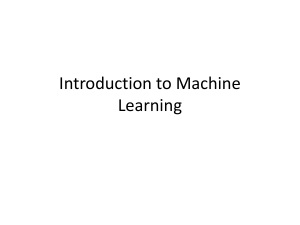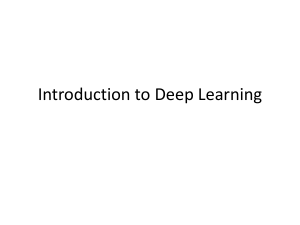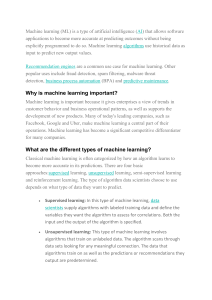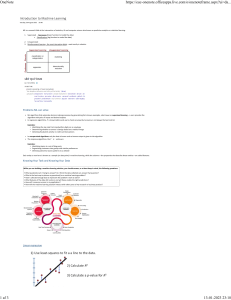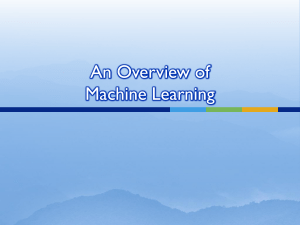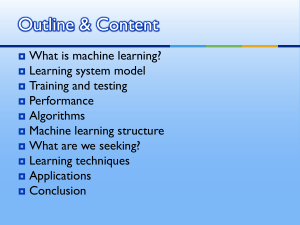Master Syllabus - Computer and Information Sciences
advertisement
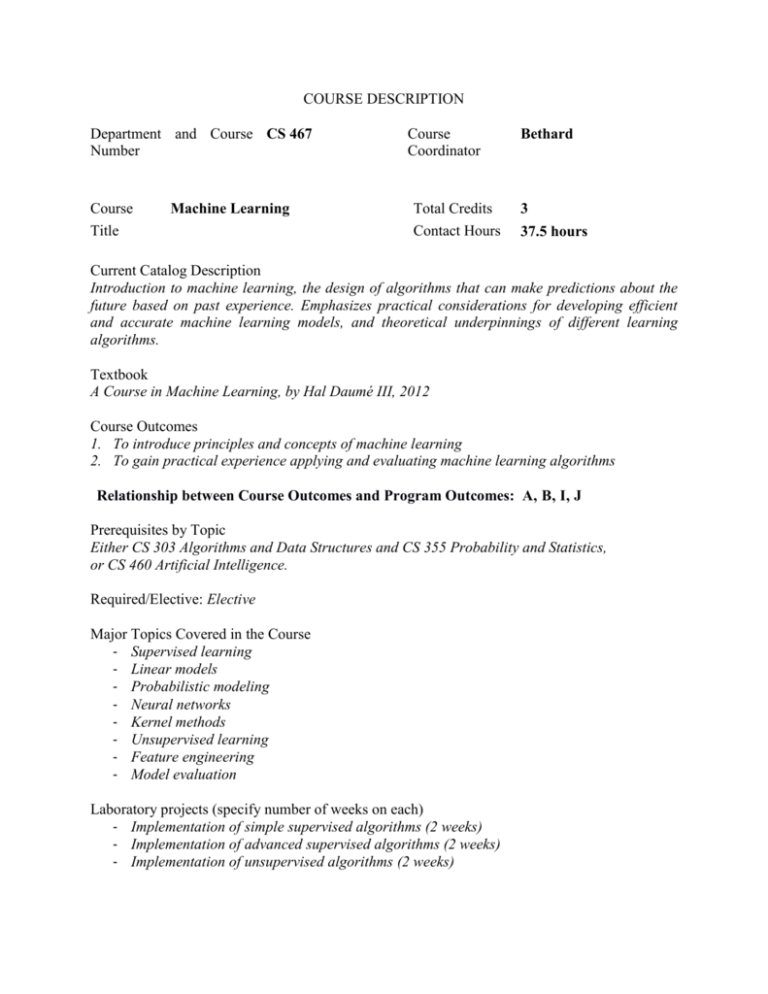
COURSE DESCRIPTION Department and Course CS 467 Number Course Title Machine Learning Course Coordinator Total Credits Contact Hours Bethard 3 37.5 hours Current Catalog Description Introduction to machine learning, the design of algorithms that can make predictions about the future based on past experience. Emphasizes practical considerations for developing efficient and accurate machine learning models, and theoretical underpinnings of different learning algorithms. Textbook A Course in Machine Learning, by Hal Daumé III, 2012 Course Outcomes 1. To introduce principles and concepts of machine learning 2. To gain practical experience applying and evaluating machine learning algorithms Relationship between Course Outcomes and Program Outcomes: A, B, I, J Prerequisites by Topic Either CS 303 Algorithms and Data Structures and CS 355 Probability and Statistics, or CS 460 Artificial Intelligence. Required/Elective: Elective Major Topics Covered in the Course - Supervised learning - Linear models - Probabilistic modeling - Neural networks - Kernel methods - Unsupervised learning - Feature engineering - Model evaluation Laboratory projects (specify number of weeks on each) - Implementation of simple supervised algorithms (2 weeks) - Implementation of advanced supervised algorithms (2 weeks) - Implementation of unsupervised algorithms (2 weeks) Criterion 3 Student Outcomes Outcome a An ability to apply knowledge of computing and mathematics appropriate to the discipline X b An ability to analyze a problem, and identify and define the computing requirements appropriate to its solution X c An ability to design, implement, and evaluate a computer-based system, process, component, or program to meet desired needs d An ability to function effectively on teams to accomplish a common goal e An understanding of professional, ethical, legal, security and social issues and responsibilities f An ability to communicate effectively with a range of audiences g An ability to analyze the local and global impact of computing on individuals, organizations, and society h Recognition of the need for and an ability to engage in continuing professional development i An ability to use current techniques, skills, and tools necessary for computing practice j An ability to apply mathematical foundations, algorithmic principles, and computer science theory in the modeling and design of computer-based systems in a way that demonstrates comprehension of the tradeoffs involved in design choices. k An ability to apply design and development principles in the construction of software systems of varying complexity. Oral and Written Communications None Social and Ethical Issues None X X
